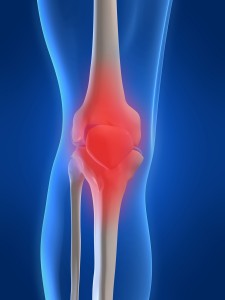 The word ëmeniscusí means crescent shaped structure and owes its origin to Greek. The C-shaped meniscus made of tough cartilage is wedged between the cartilage surfaces covering the three bones that form our knee joint. Meniscus aids the function of the joint by distributing weight and improving its stability. The function of meniscus is of grave importance for the general health of the knee. Meniscus tear or torn cartilage can severely impair the mobility of the knee joint.
The word ëmeniscusí means crescent shaped structure and owes its origin to Greek. The C-shaped meniscus made of tough cartilage is wedged between the cartilage surfaces covering the three bones that form our knee joint. Meniscus aids the function of the joint by distributing weight and improving its stability. The function of meniscus is of grave importance for the general health of the knee. Meniscus tear or torn cartilage can severely impair the mobility of the knee joint.
Meniscus tear is one of the most common knee injuries that results in severe pain in the joint. It is especially common among athletes and sportsmen who play contact sports such as football, boxing, and hockey. There are two chief causes for meniscus tear ñ It can be due to traumatic injury, primarily seen in athletes or due to degenerative processes that are seen in older patients who have more brittle cartilages. Sudden twisting and turning or bending the knee joint is sometimes responsible for torn meniscus. Rotating the knee while slightly bent can cause meniscus tear.
Symptoms and Signs of Meniscus Tear Mishap
The primary symptoms of a meniscus tear are usually that of pain and swelling in the knee that makes it worse for the knee to bear more weight while doing activities such as running, or jogging. Joint locking or incapacity to completely straighten the joint is another common complaint that is especially painful while trying to get out of the car. These are the signs to look out for when in doubt about the possibility of suffering from a torn meniscus:
* sharp pain in the knee caused by even a minor movement
* swelling of the knee
* stiffness of the knee
* obvious presence of fluid in the knee
While these signs can be rectified without medical intervention, the following severe symptoms of meniscus tear require professional medical attention:
* inability to move your knee
* loss of balance when trying to stand
* locking, clicking, or popping within the knee
* extreme difficulty in straightening the knee
* piercing sensation in the inner and outer edges of the knee
Clinical Testing of Symptoms
The symptoms can be clinically tested by a physician to determine if the pain is caused because of a torn meniscus. The McMurray test is conducted to examine the swelling by pressing on the joint line on the affected side of the knee while stressing the meniscus to determine if it has produced tenderness that is typical of a torn meniscus. Steinmann test and Appley test are similar tests where the patient is sitting in the former and the latter involves a grinding motion while the patient lies flat with the knee bent at 90?. Squatting and bending the knee can be quite painful especially with a meniscus tear since the movement of the joint if the meniscus is torn is often restricted. Cooperís sign, which is a symptom of pain in the affected knee that is usually felt when turning over in bed, is present in over 92% of tears. The twisting motion of the knee affected by meniscal tear results in the capsular attachment getting stretched and the meniscal fragment getting strained that causes the pain.
Meniscus Tear Treatment
Nonsurgical treatment involves adequate rest, administration of ice pack to the affected area, compression, knee elevation, physical therapy, and even wearing a temporary knee brace. Surgical repair is to sew the tear together. Partial meniscectomy removes the torn section while total meniscectomy removes the entire meniscus. The last option is general avoided as it increases the risk of osteoarthritis in the knee.
Find OSS on Facebook and follow on Twitter to keep up to date on new articles and news.

